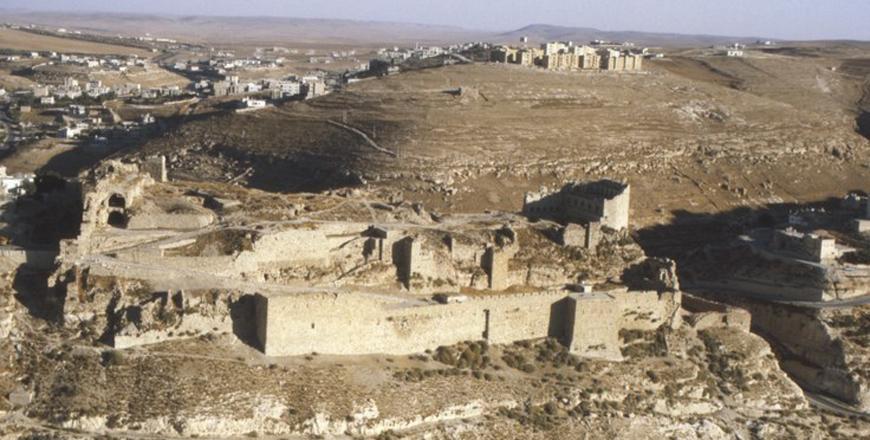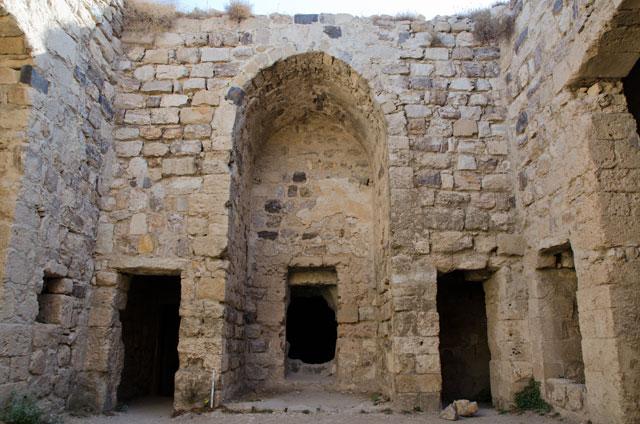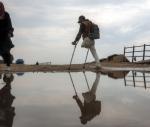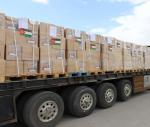You are here
Scholar examines fiscal policies of mediaeval Muslim states
By Saeb Rawashdeh - Jul 31,2022 - Last updated at Jul 31,2022

A southern stronghold Karak was an administrative centre of Ayyubid and Mamluk state (Photo courtesy of ACOR/ Collection of Rami Khouri)
AMMAN — The Eastern Mediterranean and the Biladi Sham, also known as the Greater Syria, regions were linked to other regions through trade routes, according to an American historian who specialises in the history of mediaeval Muslim states and their fiscal policies.
“We tend to look at Egypt and Syria as a kind of a unit because it was one political block during Fatimid, Ayyubid and Mamluk empires,” said Professor Warren Schultz, adding that one of the misconceptions was that the trade was eliminated by the Muslim conquests of the Mediterranean.
“Instead, the patterns of the Mediterranean trade had just shifted and newly found documents from the Noble Sanctuary that came from 14th century point to social history and contain numerous wills, attestations, court cases and testaments,” Schultz said, noting that these documents shed light on economic processes in the Levant.
He also noted that during the Ayyubid and Mamluk periods the weight and texture of coins varied.
In 1430s and 1440s the coins in Mamluk state lost its value due to the size and the quality of silver used for minting, the historian said.
He pointed to a mint manual (Al Baraa) from the Ayyubid period which gives a lot’s of information how coins were minted, and it has been important for researchers who deal with coins from multiple areas of the Islamic world and in circulations in main trade centres like Cairo, Alexandria, Damascus, Hama, Aleppo and Jerusalem.
“Archaeological digs in Jordan reveal evidence of everyday life and hints to how the economy functioned in the Middle Islamic Period [1000-1500],” Schultz said, adding that 40-50 years ago scholars did not have an insight into that evidence.
During the Mamluk period the centralised, bureaucratic system existed and its aim was to register and track the land property of individuals and institutions, he said, noting that the state would allow individuals involved in the military service to use products of the state agricultural land as a form or payment.
“Tax rates and type of crops grown on the agricultural land was also evidenced in the state documentation of the period,” Schultz noted.
Regarding Transjordan, there was centralised state investment in the sugar industry during the Mamluk dynasty in the Dead Sea Valley, Schultz said, noting that Tell Hisban in the Madaba Plains was another administrative outpost as well as the Karak Castle in the south.
“When the sugar industry was active, it impacted the people of the area providing the income for them,” Schultz said, noting that based on castles which were administrative centres of Mamluk dynasty in that period, Jordan was an important area of the state.
Scholars found a lot of Ayyubid coins on the territory of modern Jordan which indicated a monetised economy, Schultz added.
Related Articles
AMMAN — Islamic monetary history is a largely unexplored field for researchers due to resource constraints and limited source material, acco
AMMAN — In 1189, after the victorious siege which started in 1187 and the crusaders’ fall of Hatting, Saladin came into possession of the ca
AMMAN — Coin design during the Mamluk Sultanate led to economic challenges, noted an American historian. Many scholars believe that sul

















